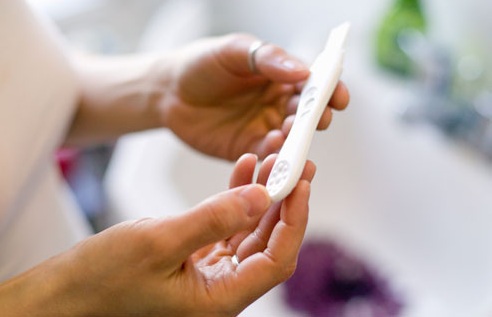Pregnancy is one of the happiest phases in women's life. Most of the time a woman passes through the pregnancy phase without issues. However, sometimes due to a combination of a multitude of factors, miscarriages can occur, which can leave the couple devastated. This is often followed by a period of guilt and depression. Fortunately, this is temporary and it has been proven that women who have had miscarriages can have a healthy conception later on. So how fertile are you after miscarriage? When can you conceive again? Read on to find answers.

Are You More Fertile After a Miscarriage?
The topic of fertility after miscarriage has no clear answer. While some experts suggest that the fertility peaks after miscarriage, other professionals completely discard the notion. A lot of studies have been done regarding the subject but the results of different studies often contradict each other. Doctors tend to be on the safer side and advise you to have no sex immediately after miscarriage. Quite often, a waiting period of two to three months is advised. It is imperative to avoid sex for at least two weeks following the miscarriage to prevent infections. Always consult your doctor before taking any decision.
When Can You Conceive Again?
Since there is no clear-cut answer for "how fertile are you after miscarriage", it's difficult to give a well-defined time frame for your periods to return. It is common notion that ovulation should start within six weeks of a miscarriage, but it does not apply to everyone. For some, having sex before their periods return can also result in pregnancy. The time it takes for your periods to return may vary from 28 days to 8 weeks. Due to these differences, it is often not possible to determine the average time for ovulation after a miscarriage. The amount of time you need to ovulate again depends on your body's recovery time. A time frame of 6 to 12 months is normal for a woman to conceive after a miscarriage.
What Are the Chances of Another Miscarriage?
Successive miscarriages are pretty rare. Studies have shown that the risk of having successive miscarriages is 14%. This increases to about 26% by the time you have had two miscarriages. Three miscarriages increase the risk to 28%. However, in spite of all these statistics, only 1% of all the women have successive miscarriages. Miscarriage does not hamper your next chance at conception. In fact, most women have healthy babies following a miscarriage.
How to Increase Fertility After Miscarriage
Miscarriage is not the end. In case you were wondering, "how fertile are you after miscarriage", there has been no conclusive evidence that links miscarriage to fertility. However, there are certain steps that you can take to increase fertility after a miscarriage.
1. Take Prenatal Vitamins
 Folic acid plays a crucial role in maintaining a healthy pregnancy. In fact, research by the University of Maryland Medical Center has suggested that in addition to reducing neural defects, the folic acid also reduces the risk of miscarriages. Statistically, women with low levels of folic acid were more susceptible to a miscarriage. To prevent this, it is suggested that a minimum of 400mg of folic acid be included in a woman's diet. This should be done at least three months before pregnancy.
Folic acid plays a crucial role in maintaining a healthy pregnancy. In fact, research by the University of Maryland Medical Center has suggested that in addition to reducing neural defects, the folic acid also reduces the risk of miscarriages. Statistically, women with low levels of folic acid were more susceptible to a miscarriage. To prevent this, it is suggested that a minimum of 400mg of folic acid be included in a woman's diet. This should be done at least three months before pregnancy.
2. Make Lifestyle Changes
 A healthy mother always has a healthy baby. And to be healthy, mothers have to implement certain changes in their lifestyle. The question "how fertile are you after a miscarriage" often has inconclusive answers. However, by making healthy choices, you can avoid successive miscarriage and improve fertility. Eating fresh fruits and avoiding strenuous exercise, caffeine, smoking, drinking or high stress levels go a long way in preventing miscarriage.
A healthy mother always has a healthy baby. And to be healthy, mothers have to implement certain changes in their lifestyle. The question "how fertile are you after a miscarriage" often has inconclusive answers. However, by making healthy choices, you can avoid successive miscarriage and improve fertility. Eating fresh fruits and avoiding strenuous exercise, caffeine, smoking, drinking or high stress levels go a long way in preventing miscarriage.
3. Find the Right Timing
 With the right timing, one can conceive a healthy baby after miscarriage. According to doctors' recommendations, it is often advisable to wait until after the first complete cycle after a miscarriage. This allows your body to heal and also allows your doctor to estimate your pregnancy.
With the right timing, one can conceive a healthy baby after miscarriage. According to doctors' recommendations, it is often advisable to wait until after the first complete cycle after a miscarriage. This allows your body to heal and also allows your doctor to estimate your pregnancy.
4. Keep Track of Your Cycle
 The first few cycles after a miscarriage may be erratic and the body heals during this time. After around 6 weeks, menstruation resumes the normal cycle. When this happens, make sure you keep a track of the cycles. Take regular fertility tests and watch out for any unusual spotting. This can come in handy during pregnancy dating and will help you understand "how fertile are you after miscarriage".
The first few cycles after a miscarriage may be erratic and the body heals during this time. After around 6 weeks, menstruation resumes the normal cycle. When this happens, make sure you keep a track of the cycles. Take regular fertility tests and watch out for any unusual spotting. This can come in handy during pregnancy dating and will help you understand "how fertile are you after miscarriage".
5. Check Up with Ob/Gyn Doctor
 The key to avoiding miscarriages is regular checkups. Choose a doctor who understands your situation. A supportive Ob/Gyn will not only administer the proper tests but also provide emotional support. Regular checkups with your doctor is essential. Choosing a proper doctor before pregnancy is always recommended as she/he can understand your medical history and provide better care.
The key to avoiding miscarriages is regular checkups. Choose a doctor who understands your situation. A supportive Ob/Gyn will not only administer the proper tests but also provide emotional support. Regular checkups with your doctor is essential. Choosing a proper doctor before pregnancy is always recommended as she/he can understand your medical history and provide better care.
6. Do Testing
 If you have had successive miscarriages, then it is very essential to do proper testing in order to determine the cause of the miscarriages. The most probable causes of successive miscarriages can include (but are not limited to) chromosomal defects, hormonal imbalance, and immune system deficiency. Once the cause is identified, talk with your doctor about the available treatments.
If you have had successive miscarriages, then it is very essential to do proper testing in order to determine the cause of the miscarriages. The most probable causes of successive miscarriages can include (but are not limited to) chromosomal defects, hormonal imbalance, and immune system deficiency. Once the cause is identified, talk with your doctor about the available treatments.
7. Watch for Fertility Signs
 Fertility signs are your road maps to conception. Watch out for signs like tenderness of breasts, and cervical mucus as they can help identify the fertility period. Doing this over a period of time will help you draw your own fertility cycle. Having sex during this cycle increases the conception rate. Studies suggest that cervical mucus is a major indicator of fertility. So the next time when you go to the toilet, pay attention to the consistency, color and smell of your mucus.
Fertility signs are your road maps to conception. Watch out for signs like tenderness of breasts, and cervical mucus as they can help identify the fertility period. Doing this over a period of time will help you draw your own fertility cycle. Having sex during this cycle increases the conception rate. Studies suggest that cervical mucus is a major indicator of fertility. So the next time when you go to the toilet, pay attention to the consistency, color and smell of your mucus.
